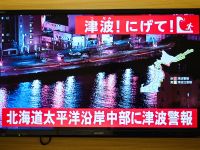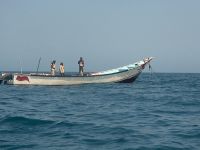Privatization
The government under Hoss is working to reduce public debt. The 1999-2000 budget seeks to reduce public debt to 85 percent of GDP by 2003 and plans a major privatization program. But many believe that the state-owned enterprises are not in condition to be placed on the market. For example, the power sector, which posts losses of roughly $200 million a year because of low collection rates, would in its present state be an unattractive proposition for a private operator. In fact, of all of the state-owned businesses, the public telecommunications authority, Ogero, is one of the few revenue-generating parts of the state sector.
The Lebanese government has been taking fairly modest steps towards privatization. One project that seems likely to get off the ground is the expansion and management of the port of Sidon. Consideration is also being given to the private management of the port of Beirut. Privatization of some state assets, including the loss-making carrier Middle East Airlines, is being seriously considered, but faces stiff opposition from many politicians.
Stock Exchange
The Beirut Stock Exchange (BSE) was reopened in the beginning of 1996 after more than eleven years of inactivity. The BSE is considered to be an important financial tool that will assist in stimulating the Lebanese economy by attracting capital to the country. Currently, there are only a few securities traded on the BSE, and it does not meet international stock exchange standards. By the end of 1998, the BSE had a market capitalization of $2.4 billion with 12 companies listed. In 1998, the bearish mood that dominated most emerging markets, coupled with high interest rates on government paper, burdened the BSE with the market index losing 27.8 percent on the year. In 1999, the daily average trading volume dipped sharply to $200,000, versus $1.36 million in 1998 and $2.61 million in 1997.The Lebanese government intends to increase the level of trade on the BSE by developing its exchange standards, enhancing technological support, and offering attractive tax rates and liberal currency regulations to foreign investors.
Major Projects
The Council for Development and Reconstruction (CDR) currently has US$ 1.6 billion in projects underway, including the Beirut Airport project, the beltway road system around Beirut, modernization of the telecommunications network and improvements to the energy sector. International funding for these projects is vital to the success of the program. Of the grants and loans committed thus far about 85 percent come from Arab or European sources and the World Bank, with Italy being the major individual source of foreign financing. Thus, for example, the US$ 190 million contract for the new Beirut University, to be undertaken by a consortium comprising Ed Zueblin of Germany, Turkey’s Tekser, the local Arabian Construction Company and Milne & Nicholls of Canada, will be financed by Saudi Arabia and Oman. Direct US financing is negligible. European firms such as Ansaldo and Siemens, and American corporations such as Motorola and MCI Communication are already deeply involved in Lebanese reconstruction projects.Nevertheless, US hesitation to invest in Lebanon has given Europe a distinct edge in the Lebanese market. The undeveloped relationship and commercial obstacles, manifested, for example, by restrictions on direct flights between the US and Lebanon, is reflected in mutual trade figures; the US imports less than 10 percent of all Lebanese exports.
The reconstruction of Beirut’s City Center is being undertaken by Solidere, which is listed on the Beirut Stock Exchange. Work on infrastructure, which includes office and housing projects as well as land reclamation and archaeological parks, began in the summer of 1994.
As part of its reconstruction program, the Lebanese government plans to build five free trade zones in several locations throughout the country. Three are already in operation, including the Tripoli Port and Selaata Free Zone (in northern Lebanon).
The first to be built, the Beirut Port Free Trade Zone, was inaugurated in late 1995. This zone, which will eventually encompass approximately 100,000 square meters, replaces the former free trade zone destroyed during Lebanon’s Civil War. The government is implementing a US$ 130 million project to upgrade Beirut’s port facilities in an effort to recapture its pre-civil war status as one of the main ports of the eastern Mediterranean. So far, two buildings with a total area of 24,000 square meters have been constructed at a cost of US$ 6.5 million.
With regard to other free trade zones, the government commissioned a British company to conduct research and to assist in the establishment and operation of free trade zones in Lebanon. The purpose of the research is to determine suitable locations and to provide appropriate recommendations for management and operation of the zones. The government intends to develop the infrastructure and to build large storage facilities in the zone areas. It does not intend to sell areas in the zones but, rather, to lease them to companies for a period of twenty-five years.
In an effort to restore confidence in Lebanon, US President Bill Clinton sponsored the Friends of Lebanon Conference. The conference concluded with attendees pledging US$ 1 billion in financial assistance to all sectors in Lebanon for 1997 and a total of US$ 2.2 billion to be delivered by the year 2000. Other conference participants announced immediate contributions while some countries pledged to send technical delegations to Lebanon to work on specific programs and projects.
Build Operate Transfer
The lack of reserves available for the financing of Lebanon’s development, reduction in foreign aid and the hesitation shown by international financial institutions to finance projects in the face of the country’s increasing debt have meant that Lebanon is increasingly turning to private funding, particularly, BOT’s to promote large infrastructure projects. Nevertheless, the BOT arrangement is still rare in Lebanon, and only few such projects have been implemented.Two BOT franchises pertaining to global standard for mobiles (GSM) networks were awarded in August 1994. This type of financing is unusual in this sector because of its sophisticated high-tech nature, which is subject to rapid change and to difficulty in predicting prices. Three companies, France Telecom, Mobile Liban and LibanCell (FTML) have already begun operating the network under twelve-year concessions. Mobile Liban is 67 percent owned by France Telecom and 33 percent owned by the local company Mikati, and already has over 56,000 subscribers since starting services at the end of January 1995. LibanCell, which is owned by a group of local companies, and Telecom Finland (14 percent), has attracted over 50,000 customers since launching operations in April 1995. Both digital cellular operators plan to increase their network capacity to keep up with demand.







